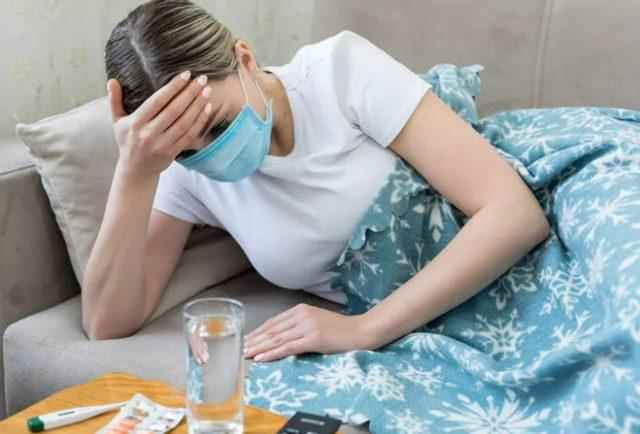Citizens whose houses were damaged after the losses in the earthquake area stay in containers and tents. Hygiene needs cannot be fully met in these accommodation facilities. After the earthquake, earthquake victims now face the increasing risk of infectious diseases and even epidemics. There is a high probability that these diseases will spread rapidly in public living areas such as tents and container cities. prof. Dr. Kıvanç Şerefhanoğlu said that highly contagious infectious diseases can occur within 4 days to 4 weeks after the earthquake. Şerefhanoğlu also pointed out that there has been an increase in the frequency of some infectious diseases in the region and gave information about the measures that can be taken under current conditions.
BIGGEST RISK LACK OF PERSONAL TOILETS
Stating that it is essential to provide bottled water and to dispose of feces and garbage under appropriate conditions, Prof. Dr. Kıvanç Şerefhanoğlu stated that the biggest risk in the region stems from the inadequacy of personal toilets and said that the number of portable toilets should be increased. Underlining that dry food and canned food should be used, meals should be prepared centrally, and each family should not be allowed to prepare meals separately, Dr. Kıvanç Şerefhanoğlu said, “If possible, attention should be paid to the settlement planning in a way to be 4 to 5.5 m2 per person. A large number of shelters should be provided to prevent overcrowded settlement. It is very important to increase the number of tents, hotels, containers and guesthouses that will be sheltered,” and mentioned the things to be considered in public living areas. Kıvanç Şerefhanoğlu also appealed to the citizens who will send aid to the region and recommended that personal protective and hygiene materials such as plenty of gloves, masks and disinfectant soap should be given priority. Stating that it is necessary to fight flies and rodents, which are effective in the spread of epidemic diseases, Dr. Şerefhanoğlu noted that it is important to have insecticide and repellent drugs, to control rodents, to apply necessary pesticides in public living areas, and that there is a lot of work for the health teams. Serefhanoglu; “It is vital that the infections that occur in earthquake victims are followed up by the health teams and treated quickly,” he said.
“THE TB IS INCREASING BETWEEN EARTHQUAKE VICTIMS”
Kıvanç Şerefhanoğlu, drawing attention to the increasing incidence of tuberculosis among earthquake victims, stated that poor living conditions, overcrowded settlement, excessive fatigue and stress, difficulties in diagnosis increase the risk of tuberculosis among earthquake victims, and especially young children, the elderly and those with chronic diseases are at risk. Şerefhanoğlu also gave information about other infectious diseases that are frequently seen after the earthquake.

THERE ARE RISKS OF SERIOUS INFECTION
Talking about respiratory diseases that may occur in the region, Dr. Kivanc Sereafhanoglu; “Fear, flu, sinusitis, pharyngitis and pneumonia are common after an earthquake. The people affected by the earthquake live in crowded conditions in poorly ventilated environments, which paves the way for these respiratory tract infections. Also, mentioning that water and food-borne diseases can be seen, Dr. Serefhanoglu; “Water-food-borne infections occur when water and food are contaminated with pathogens (viruses, bacteria, parasites) originating from human or animal feces. Diarrhea, dysentery, nausea, vomiting, hepatitis A and E are water-food-borne infections whose frequency increases after earthquakes. Hot air, inadequacies in access to clean water, inability to store food in suitable conditions (such as no refrigerator), and deterioration of the sewer infrastructure pave the way for these infections and may lead to epidemics. In these patients, diarrhea and dysentery are often caused by shigella, salmonella, giardia, cholera and rotavirus, and hepatitis by hepatitis A and E viruses.
WOUND INFECTIONS CAN CAUSE ORGAN LOSS AND DEATH
Kıvanç Şerafhanoğlu, who also gave information about the diseases that may occur if the tent cities and shelter areas are not cleaned in the region; “Vector-borne infections are those transmitted by the bite of an arthropod such as a mosquito, fly, tick or mite. Typhus, malaria, oriental boil are among these infections. Deterioration of infrastructure and increases in rodent population such as mice are among the most important reasons. Emphasizing that another type of disease that can be seen in the region may be skin and wound-related diseases, Şerefhanoğlu said; “Skin and wound infections occur in areas of injury and trauma of the body that occurred in an earthquake. These infections are often caused by various bacteria. Wound infections can be serious and cause loss of organs and lives. Tetanus is a significant threat to people suffering from gas gangrene earthquake injuries. Scabies can also cause epidemics due to the deterioration of hygiene conditions and crowded life, and it constitutes an important health problem.
(UAV)
